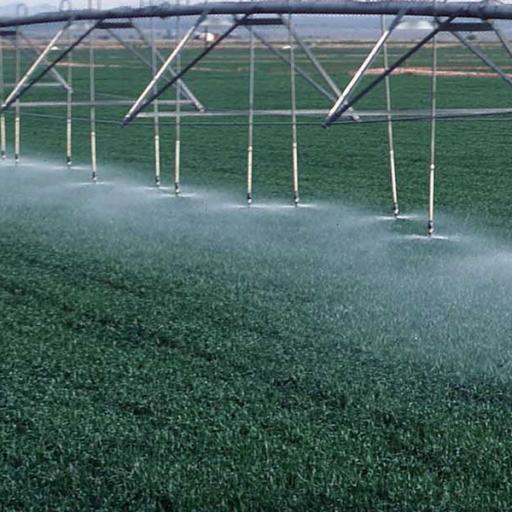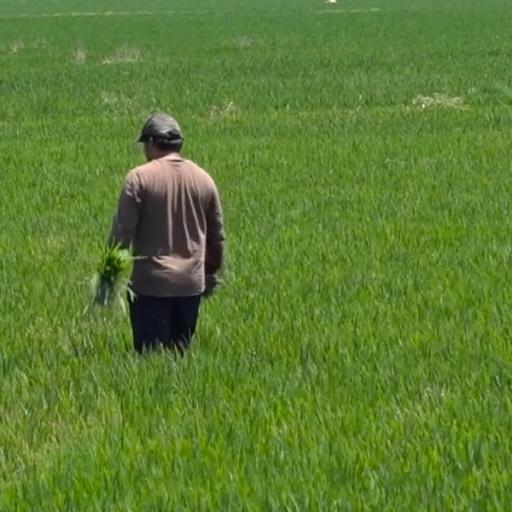Modern agricultural practices have dramatically increased crop production, but have also put significant pressure on both groundwater and surface water pollution owing to reactive nitrogen. Since 1970, reactive nitrogen creation has increased considerably, largely driven by increased inorganic fertilizer application to meet growing global demand for agricultural commodities Galloway et al., (2008). Although nitrate concentrations have slightly decreased over the past decades in some European reservoirs, levels have remained high in others and, overall, nitrate levels in water stock have remained constant. Although some improvements have been made in reducing nutrient inputs from wastewater discharge, diffuse pollution of agricultural origin remains a major threat for water in the EU. From 2000 to 2016, nearly 40 per cent of the groundwater monitoring stations in the EU exceeded average values of 25mg NO_3^-l-1 and almost 50 per cent of the surface water monitoring stations exceeded average values of 10mg NO_3-l-1. Similar high levels occur in other parts of the world where high levels of chemical fertilizers are used (Eurostat, 2018).
Effectively managing the tradeoffs inherent in nitrogen use requires information on the true marginal benefits and costs to both private farmers and society. The benefits of nitrogen-based fertilizer application, measured in terms of improved crop yields, are easily quantified based on the market value of crop production. In contrast, the social costs of nitrogen are not captured in market prices for fertilizer or agricultural commodities and are incurred primarily by the public downwind or downstream of agricultural activities. Accounting for these costs in policies, payment schemes, or programs designed to influence land management, offers the potential to mitigate these tradeoffs and substantially improve environmental and social outcomes, especially in agriculturally dominated landscapes. However, translating environmental changes to damage costs requires an integrated approach that links specific interventions with the cascade of nitrogen related damages over space and time. Recent studies have attempted to fill this gap by monetizing nitrogen related damages for the EU Brink et al., (2011), the US Sobota et al., (2015), and China Gu et al., (2013). These studies effectively highlight the potential magnitude of nitrogen damages and the urgent need to improve nitrogen cost accounting.
However, nitrate pollution is a typical non-source pollution (NPS) problem, as only the ambient concentration of nitrogen is observed, posing serious challenges in policy formation and regulation even when using the correct cost accounting. The main reasons are informational asymmetries between the regulator and the individual farmers, along with the coexisting uncertainty related to farm technologies and natural conditions. In policy formulation, these informational asymmetries induce moral hazard and adverse selection problems. Under moral hazard, as monitoring and measurement of individual nitrate emissions is not possible, farmers can always increase their profits by choosing higher than the socially desirable nitrogen emissions levels. On the other hand, under adverse selection, individual farmers may have incentives not to reveal their specific characteristics or farming type to the regulator if this is profitable for them. As the empirical evidence worldwide reveals, in such situations the standard environmental policy instruments cannot be used to internalize external damages or to obtain the Pareto optimal outcome. This failure had resulted in increasing effort to develop policy schemes appropriate for such problems. Recently, the focus of applied research is on the possibility of measuring individual emissions by applying either monitoring technologies or conventional econometric tools to estimate individual emissions from farm-level data in order to use standard policy instruments to regulate NPS pollution to some, or even to a full, extent.
Nevertheless, an important limitation of these individual assessments is that one needs the population of farm operations in each specific region to approximate more accurate individual leaching levels. Using data from a representative sample of farmers, researchers and policy makers aim to approximate mean leaching levels that then can be applied to introduce conventional policy instruments for the population of farmers. However, as noted by several authors nitrogen is lost to aquatic, regional atmospheric, and global atmospheric pools in a variety of forms. These loss pathways are associated with damages that occur over heterogeneous spatial and temporal scales Erisman et al., (2013). Valuing these damages requires tracking several forms of nitrogen across space to endpoints where the environment or the water resources are impacted. The mean value used to impose taxes or levies in several countries and regions across the globe will turn to a non-optimal outcome which intensifies the problem in certain occasions.
A promising and cost-effective alternative to proxy more accurately individual leaching levels is to use the existing farm surveys to construct a synthetic population of farmers covering the whole region under study incorporating all alternative farming techniques and simulating all possible natural conditions. Generally speaking, the task of synthetic population generation (SPG) refers to the process of generating a synthetic dataset that mimics the true population. In other words, it facilitates the inductive passage from the sample to the population, assuming the observed sample is quasi-representative of the true population. With an accurate process the researchers construct synthetic farm data that mimics the true population and hence provide more solid evidence to support their research claims. In addition, using a synthetic population of farmers ambient nitrate concentrations in water reservoirs are not neglected in the estimation of individual leaching levels as they reflect actually local climatic, environmental and hydrological conditions that determine the extent of externality for rural and urban dwellers leading to more optimal policy interventions.
Along these lines, our aim in this paper is to use synthetic farm data to estimate both crop technology and nature's nitrate residual generating mechanism to approximate individual nitrate leaching levels in the Greek NUTS II region of Thessaly during the 2017-18 cropping year. Our analysis is based on the FADN database that accurately collects individual farm data for the last 30 years across the EU. Then following Young et al., (2009) and Sun and Erath (2015), we use a Bayesian network learning approach taking into account the conditional distribution of input and output variables to formulate a consistent way to generate a synthetic population of farmers. The developed Bayesian network is coupled with the use of non-parametric regression models to facilitate the generation of synthetic population that mimic the observed ones to a high degree. Then, building upon the sequential GME approach suggested by Kaplan et al., (2003) and Farzin and Kaplan (2004) we impose into a generalized entropy filter a specific theoretical structure describing both crop production technology and nature's nitrogen residual generating mechanism. Finally, the theoretical model is based on the multiple production relations model developed by Murty et al., (2012) that identifies appropriately the features of by-production of pollution in intended output production activities which is adapted for nitrate leaching occasions in intensive crop production.
The remainder of the paper is structured as follows. Next section discusses the various approaches used in synthetic population generation process and presents the use of Bayesian learning networks. The following section presents the farm technology taking into account individual emissions arising from chemical fertilizer use, while section 4 presents the GME estimator applied. Section 5 discusses the practical problems and presents the econometric estimates, while the last section discusses policy implications and concludes the paper.







